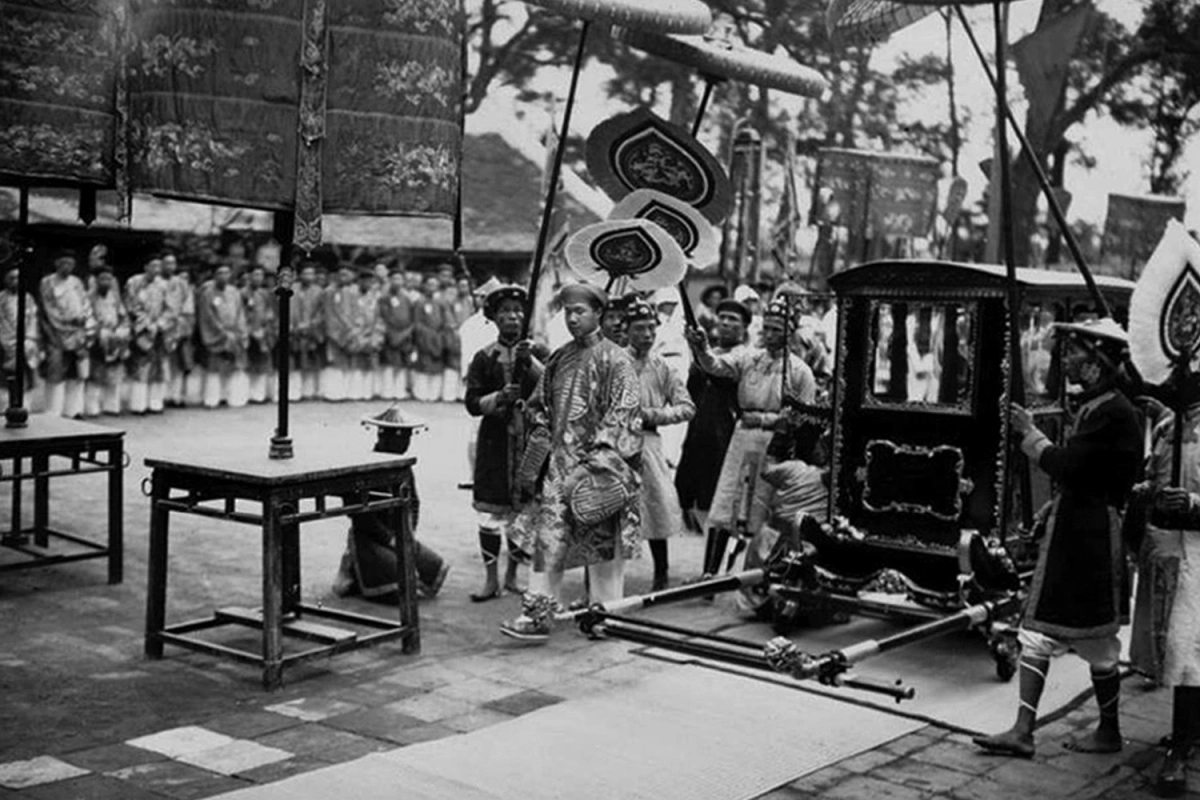Workers at a lead mineral resource in the northern mountainous province of Bac Kan in the early-20th century. Photo courtesy of Dong A Books
The photographs are used in Vietnamese historian Dao Duy Anh’s book “Viet Nam Van Hoa Su Cuong” (The Outline History of Vietnamese Culture), and were taken by foreign photographers.
A woman buying jewelry at Chan Hung store on Hang Bac street, Hanoi. Photo courtesy of Dong A Books
The street was established around the 15th century during the Le Dynasty. Jewelry artisans started gathering here during the Nguyen dynasty, making the street renowned for jewelry sold in the stores located here, and thus, its name “Hang Bac” (Silver Street).
Hang Bac is now one of the most crowded streets in Hanoi and a must-visit hotspot for foreign tourists.
Vendors gathering at Buoi market. Photo courtesy of Dong A Books
In the early-20th century, Buoi market was one of the largest local markets in Hanoi, and vendors gathered here six times a month, on the 4th, 9th, 14th, 19th, 24th, and 29th day of every lunar month.
A calligrapher writing for his customer during the Tet Lunar New Year. Photo courtesy of Dong A Books
Buying calligraphy writings on the occasion of the lunar new year is one of the traditional rituals that have been preserved until today. The characters in the calligraphy represent the buyers’ wish for their new year.
Hanoian children buy lanterns prior to the Mid-Autumn Festival, which takes place on the 15th day of the eighth lunar month. Photo courtesy of Dong A Books
A lot of people and vehicles can be seen here at Dong Xuan Market, Hanoi during the early-20th century. Photo courtesy of Dong A Books
This photo was taken during a ritual offering to the Earth and Heaven during the Nguyen Dynasty. Photo courtesy of Dong A Books
The offering was held after midnight annually and performed by the emperor. During the event, the emperor prayed for peace, prosperity, progress, favorable weather and harvests across the country in the following years.
Students attending an outdoor illustration class. Photo courtesy of Dong A Books
The photo was first published in the French newspaper L'Illustration in 1910.
Various historical attractions are presented in the book, including a Cham tower in the southern province of Binh Dinh. Photo courtesy of Dong A Books
This is merely one among a range of thousands-of-years-old Cham towers in the province, which are recognized for their historical and aesthetic value.
This photo of Bao An Pagoda was taken by French photographer Émile Gsell during the 19th century. Photo courtesy of Dong A Books
Gsell was one of the first French photographers visiting and capturing the scenery and people in Vietnam.
The pagoda, built around 1842 using the funds raised by Hanoi General Nguyen Dang Giai, was located by Sword Lake before being demolished in 1892. The only vestige of the pagoda is the Hoa Phong Tower, which is now located on Dinh Tien Hoang street.
“Viet Nam Van Hoa Su Cuong” was first published in 1938 and is considered one of the most systematic historical books about Vietnamese culture ever since.
Together with former minister of education Nguyen Van Huyen’s book “Van Minh An Nam” (The Civilization of Vietnam), the two books set the foundation for modern Vietnamese cultural studies.
















